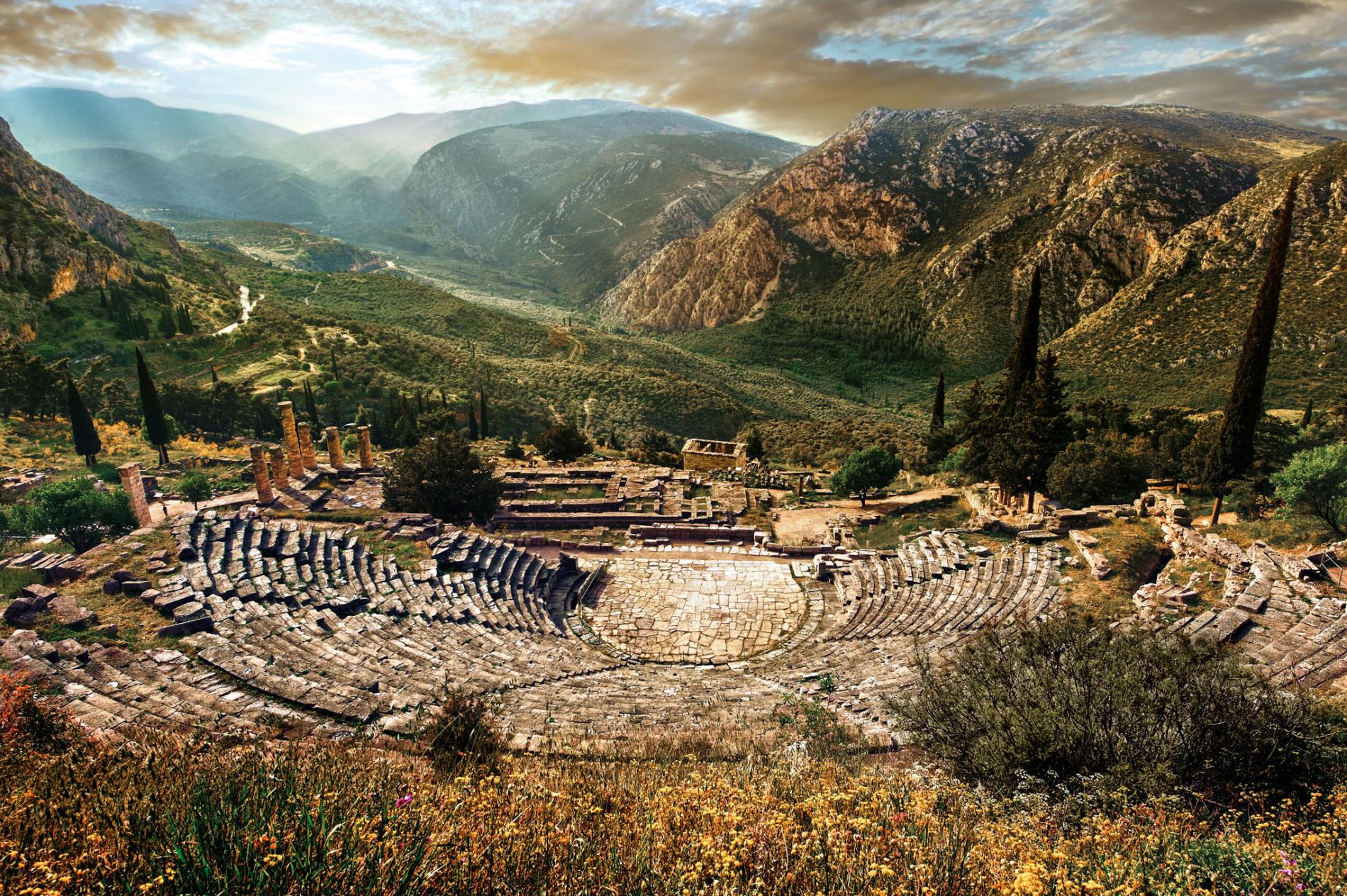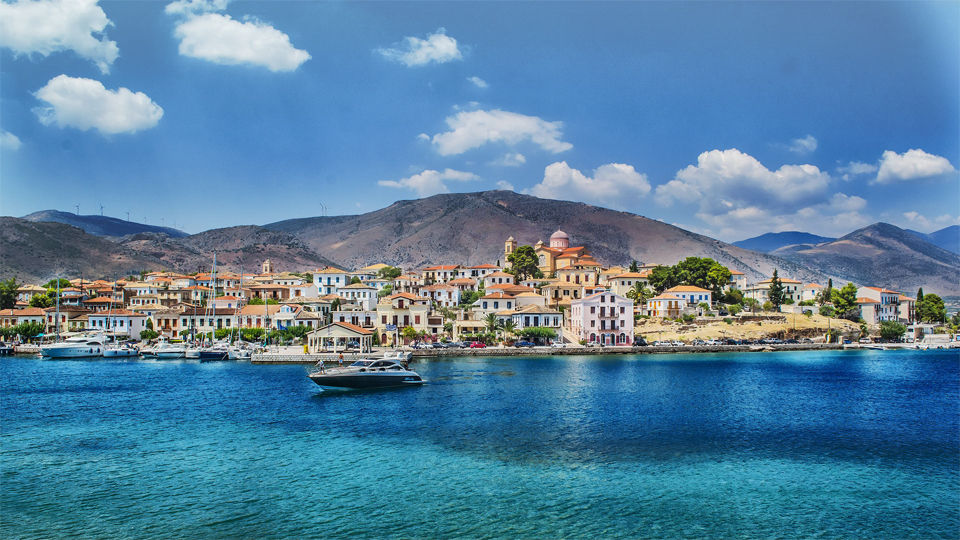In Delphi the harmony that bound men and their gods is still apparent. Photographs cannot do justice to the grandeur and serenity of the setting. Nor can words express the emotions that this holy place provokes. The eagles, dispatched by Zeus to find the centre of the earth, met here, at Delphi. This is where the god Apollo founded his sanctuary when he killed the dragon Python. The most renowned oracle in ancient times was located in this corner of Central Greece.
The Delphic landscape, a Unesco World Heritage Monument since 1972, and the archaeological site are a gift from Greece to humanity. Here you will bow to what men and nature made together, a creation beyond place and time. You’ll discover your deeper self, as the power of human potential and divine energy resonate in you. And you will leave with prophecies of your own.
What to do in Delphi
The navel of the world
Layers of myth and history enhance the natural magnificence of Delphi. It is told that Zeus sent two eagles in opposite directions to determine the fulcrum of all existence. When they met at Delphi, he proclaimed it the “navel of the world”. Tradition also relates that at Delphi a sanctuary existed, dedicated to Mother Earth and guarded by the dragon Python. Apollo, disguised as a dolphin, arrived at Kirra, Delphi’s port, slew the dragon and founded his own sanctuary in its place, the Temple of Apollo.
The Delphic oracle was an important spiritual and religious centre from the 6th century BC to the 4th century AD and rewarded the god-fearing with credible, if ambiguous, prophecies. Ancient pilgrims expressed their gratitude in the form of dozens of magnificent offerings that came to light during excavations.
The Delphic landscape, a trip fit for the gods
You can still feel the divine presence in every atom of this spell-binding location. Two giant cliffs at the foot of Mt Parnassos – the Phaidriades (Shining Rocks) – overlook the oracle and the sanctuary. The surrounding area from Arahova to Kirra is a vast silver-green olive grove. Together they form the famous Delphic landscape. Soothing yet wild, dramatic yet welcoming, it seems to sway to an inaudible score that floods the soul with the music of the gods.
The Temple of Apollo, the Theatre and the Stadium
Like a worshipper in ancient times, you’ll walk up the Sacred Way to the majestic Temple of Apollo, which was decorated by Athenian sculptors. Pythia issued her prophecies from its inner sanctum. The temple is surrounded by monuments dedicated to the ancient Greek city-states, leaders and ordinary people and the whole place still exudes a unique energy.
Stand before it and look carefully at the ruins. They date from a temple built in 330 BC on the foundations of an earlier Doric temple erected in 505 BC. North of the sanctuary you’ll find the theatre, where music and drama contests were held. Walk even higher and you’ll come to the Stadium, where the Pythian Games took place.
The Kastalia spring, purifying waters
In a landscape of surreal, mystical beauty, the spring gushes from the base of Phlemboukos rock in the crevice formed by the twin cliffs. It was here that Pythia and her priests washed and purified themselves, as did every ordinary mortal before they approached the Oracle. The history of the oldest fountain dates from the 6th century BC. In the 1st century, the Kastalia of the Rock was created closer to the spring. Niches cut into its sides held offerings left to the nymph Kastalia. You are now at the very source of the myth.
More info: https://www.discovergreece.com/en/mainland/central-greece/delphi
 English
English  Deutsch
Deutsch  Français
Français  Nederlands
Nederlands 

